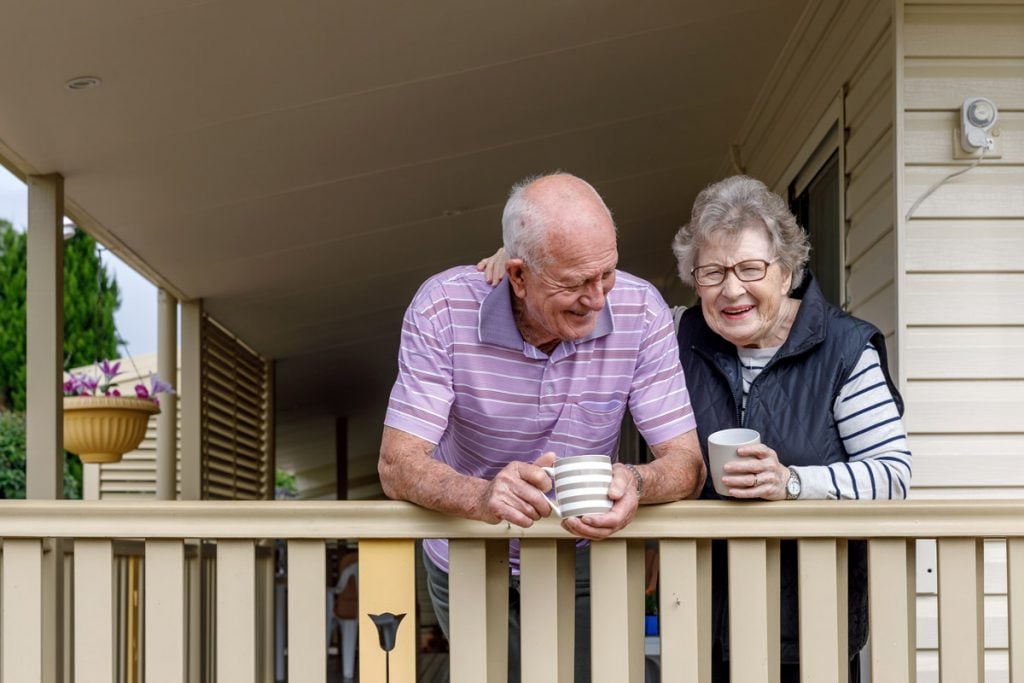Home repairs can get outrageously expensive.
In 2022, homeowners spent an average of $6,000 on maintenance and repairs, according to a report from insurance firm Hippo.
If you’re an older adult on a fixed income, finding the money to fix things up around the house can feel nearly impossible. But neglecting critical home maintenance can end badly, costing you even more money down the road and putting your health and safety at risk.
Grants and loans funded by the federal government can help pay for home improvement projects like energy efficient upgrades, replacing a septic system and removing health hazards for people with lower incomes.
The Section 504 Home Repair Loan and Grant Program, also known as Single Family Housing Repair Loans and Grants, are the primary home repair grants for seniors. It’s focused on people ages 62 and old who reside in rural areas.
Other programs exist, many on the state and local level. We’ll walk you through eligibility criteria, available grants and which agencies to contact if you want to apply or learn more.
What Are Section 504 Grants?
The U.S. Department of Agriculture’s Section 504 Home Repair Loan and Grant Program aims to assist homeowners with low incomes residing in rural areas with essential home repairs and modifications.
Through this initiative, eligible homeowners can access grants and very low-interest loans (think 1%) to create safe and accessible living environments.
To qualify, your adjusted household income can’t exceed 50% of your area’s median income.
Money from this program can be used to repair, improve or modernize a home, including:
- Replace or fix a home’s insulation, foundation or septic system.
- Upgrade energy efficiency systems.
- Add accessibility features for those with mobility issues.
- Remove safety or health hazards.
Section 504 loans and grants are intended for people who can’t get or afford credit from other lenders.
Who Can Qualify for Home Repair Grants?
To be eligible for the Section 504 program, you must:
- Have an income that does not exceed income limits set by counties.
- For grants, be 62 or older.
- Live in a rural area. You can see if your address falls within a rural area as defined by the USDA by using this map.
Loan and Grant Amounts
The Section 504 program offers two types of financial assistance: loans and grants.
- Loans: Eligible homeowners can apply for loans with an interest rate as low as 1%. These loans can be repaid over a period of up to 20 years. There is a maximum loan of $40,000 for single family homes.
- Grants: Available to homeowners 62 and older. Grants do not require repayment unless the property is sold in less than three years. The maximum lifetime grant amount is $10,000.
In case you’re wondering, yes, loans and grants can be combined for up to $50,000 in assistance.
How to Apply for a Senior Home Repair Grant
The fastest and easiest way to apply for a Section 504 loan or grant is by contacting your state’s Rural Development office.
Once you reach out to your local office, a representative will help guide you through the application process, assess your eligibility and provide details about the specific documents you’ll need to submit (such as income verification records and proof of property ownership).
Weatherization Assistance Program
The U.S. Department of Energy’s Weatherization Assistance Program is aimed at improving the energy efficiency of homes for people with lower incomes. It’s all about reducing energy costs by addressing issues like air leaks, insulation and inefficient heating or cooling systems.
The program provides grants to local agencies, which then partner with qualified contractors to perform weatherization upgrades.
Upgrades can include but aren’t limited to:
- Installing attic and floor insulation
- Replacing windows or doors
- Installing attic ventilation
- Applying solar reflective coating to manufactured homes
- Installing solar screens
- Repairing or replacing inefficient heating and cooling units
- Repairing or replacing water heaters
Eligibility is primarily based on income, and priority is given to the elderly and people with disabilities.
Income guidelines vary by state, but generally, you must have a household income below 200% of the federal poverty income guidelines or receive Supplemental Security Income.
States can also opt to use 60% of the state-median income to define eligibility instead of 200% of federal poverty guidelines.
Because each state administers its own Weatherization Assistance Program, you’ll need to find contact information for your state’s program.
How much money is available for those who qualify? Unfortunately, there’s no national maximum amounts listed on federal websites. You’ll need to reach out to your local agency to get more information.
Municipal Home Repair Grants for Seniors
Even if you don’t qualify for one of the programs mentioned above, there are other home repair grants for seniors administered at the state and local levels.
These programs all share a common goal: to help make housing improvements and repairs accessible to homeowners with low incomes.
The best way to find municipal home repair grants and loans in your area is to contact your state’s Department of Housing and Urban Development or your local Area Agency on Aging.
A Harvard Joint Center for Housing Studies report found that over half of major U.S. cities offer home repair loan programs — and nearly a third have grant programs.
The study, which collected and analyzed data on 113 home repair programs in the 100 largest US cities during the fall of 2021 and winter of 2022, found these key takeaways.
- 80% of grant programs offer a $20,000 or less maximum funding amount per household.
- 69% of loan programs offer maximum funding levels of $20,000 or more.
- There are varying guidelines around who is eligible, what types of repair and replacement work can be funded and how much can be spent per participant.
- 82% of municipal home repair programs follow income eligibility guidelines set by HUD. This criteria varies widely across the country, from less than $60,000 in El Paso to almost $169,000 in San Jose.
- 18% of programs consider the age of the applicant with a focus on assisting older homeowners.
Before you apply, understand that home repair grants for seniors tend to have waiting lists.
As the Harvard study notes: “Although larger cities tend to have higher budgets and serve more households, none of the programs have sufficient funds to meet the needs of all homeowners residing in their jurisdictions who qualify for assistance.”
Other Resources
Home repair grants for seniors can be hard to come by, depending on the demand in your area. But the government isn’t the only resource available to help with home repairs and energy upgrades.
National nonprofits are also here to help, too.
Rebuilding Together
Rebuilding Together is a nonprofit organization that offers assistance with home repairs, accessibility modifications and energy efficiency upgrades.
Their aim is to improve the quality of life and independence of older adults by creating safe and comfortable living environments.
Rebuilding Together provides services through a network of local affiliates, so the services and process for applying vary depending on your location.
You can find your nearest location by using this tool. Information on how to apply can be found on each affiliate’s website.
Habitat for Humanity
Habitat for Humanity is an international nonprofit organization dedicated to building and renovating affordable housing for people in need, including older adults.
Habitat for Humanity also provides financial education and support to homeowners, helping them achieve long-term stability.
You can find more information on how to apply for a Habitat Home here.
Green and Healthy Homes Initiative
The Green and Healthy Homes Initiative is an organization that addresses the connection between health, energy efficiency and housing.
While their primary focus is on low-income families with children, GHHI also offers assistance to older adults. However, direct services are only available to residents in four U.S. cities.
Rachel Christian is a Certified Educator in Personal Finance and a senior writer for The Penny Hoarder. She focuses on retirement, Medicare, investing and taxes.
Read the full article here









